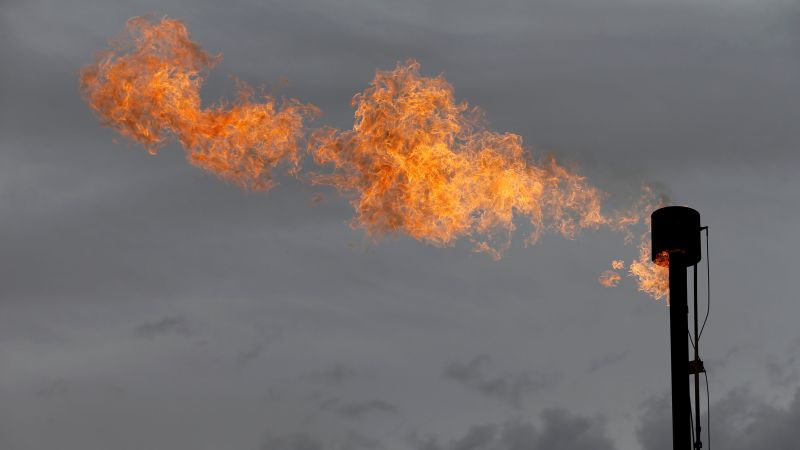The Biden administration has finalized a rule to significantly cut the US oil and gas industry’s emissions of methane, a powerful planet-warming gas that scientists and climate advocacy groups have pressed nations to rapidly reduce as global temperature soars.
The announcement came amid a wave of commitments at the COP28 climate summit in Dubai on Saturday, including a pledge from at least 117 countries to triple renewable energy by 2030. Vice President Kamala Harris also announced the US was committing another $3 billion to global climate action.
Methane, the main component of natural gas and a byproduct of fossil fuel drilling, is a potent source of climate pollution with more than 80 times the warming power of carbon dioxide during its first two decades in the atmosphere. The oil and gas industry is one of the main sources of global methane emissions, according to the International Energy Agency.
The new US rule, which will be implemented by the Environmental Protection Agency, is expected to slash methane emissions by nearly 80% through 2038, compared to what they would have been without the rule. The EPA estimates it will stop about 58 million tons of methane from escaping into the atmosphere during that period – the equivalent of taking more than 300 million gas-powered cars off the road for a year.



So they’re not addressing the root cause, just reducing a biproduct of drilling in 8 years, if that even happens (see: Paris Agreement). As evident by the oil spills, monitoring is useless to these oil companies who are never held accountable. Yet another bare-minimum action marketed with the claim: “without an iota of hype, this compact is the biggest thing that will reduce temperatures on the planet in decades".